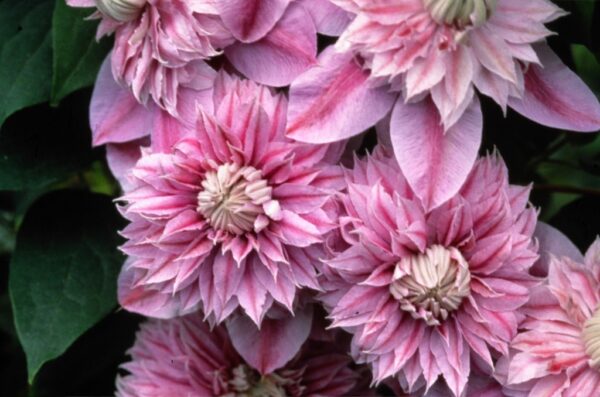This stunning variety has flowers with 6-8 base petals which are almost bronze, tinged with green and a darker bar. Inner petals are lilac with pink bar. As the flower ages the base petals fall away giving a pom-pom effect. Blooms June-August. Pruning type 2.
In this group flowering comes from last season’s ripened stems. In early Spring watch for swelling leaf buds beginning to show. Cut all dead material off above these swelling buds. Be sure all growth is tied to trellis at this time. Do not tie too tightly, so growth can begin and not hampered by tying too tight or cracking these stems.
The best time to plant clematis is spring, summer, or early fall in a location of 5-6 hours of sunlight.
Clematis roots are long and run deep and like it cool and damp, but not soggy. Plant annuals, perennials, or a low-growing shrub to shade roots, and mulch the ground around the base of the clematis to keep the soil and roots cool and moist.
Stake vine toward a trellis to train the plant to its permanent support.
Keep your clematis well watered, do not let it dry out. In years to come always soak once a week in dry weather.
Feed twice a year with organic fertilizer or compost.
Prune your clematis the first Spring after planting, back to 10-12″. This is very important to get your plant off to low branching and heavier flowering over the whole clematis vine.
With proper care, clematis vines will provide enjoyment for many years!
• Grow on all types of fences and stone walls.
• Train to grow up a tree trunk, tree stumps or rock pile.
• Use as a ground cover.
• Frame openings around porches and other entrances.
• Grow up unsightly utility and light poles.
• Screen unwanted views.
• Grow along with another climbing vine.
• Grow clematis in a container on a trellis or other support.
• Clematis can be planted in the garden most any month the soil can be worked up.
• An established clematis will live for years with normal care.
